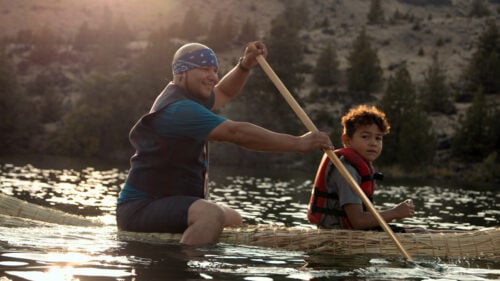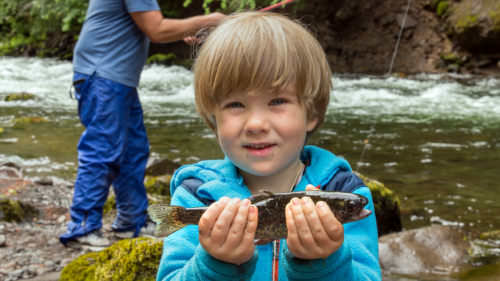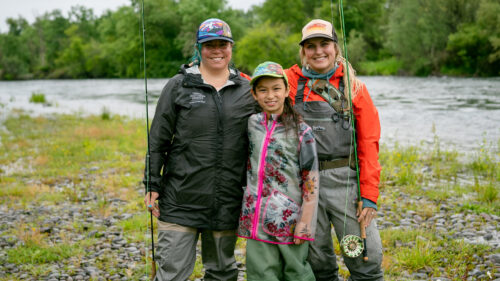Fly fishing used to be a pastime you might learn with your grandpa. You either grew up with the secrets of the tacklebox and the river in your family, or you didn’t. That’s not the case anymore, as Oregon fly-fishing guides and enthusiasts have been extending their hands to broaden their base.
“There’s been a concerted effort by industry to welcome young people,” says RA Beattie, a veteran fly-fishing guide and founder and producer of Bend-based Off the Grid studios. “Historically it was all kept close to the chest; not a lot of info was shared. [Now], the ease of information and access to information has made it more accessible.” Tranquil river images on social media, too, have made the pastime more alluring to a broader sector of nature lovers and wellness seekers who are already passionate about hiking, biking, skiing, climbing, backpacking and other types of outdoor recreation in Oregon.
Another major reason why fly fishing is cool these days? A host of female fishing guides and community groups have emerged in the space, targeting urban weekend warriors who may not have the equipment or know-how to learn and enjoy this pastime on their own. As a result, interest in the art and beauty of fly fishing has skyrocketed — and that’s exciting news for Beattie, who has helped to produce about 30 fly-fishing films over the past 20 years, including two in 2025.
One of the newest films is called “The Hard Way,” which premiered in Bend and can be seen worldwide during the annual Fly Fishing Film Tour. Travel Oregon has partnered with Beattie’s studio on this film, which highlights the beauty of the Deschutes River in particular, although Oregon is world-famous for its fly fishing on several iconic rivers including the Rogue, Umpqua, McKenzie, Metolius, John Day, Wallowa and more. Here’s a look at the film and why it’s worth a peek, whether or not you plan to take up fishing.
A Native American Legacy
Directed and filmed by Beattie and Arian Stevens, written by Miles Nolte and produced by Tim Harden, Beattie and Nolte, “The Hard Way” is a visual and emotional journey that invites viewers to bask in the rhythms of a river and the life it sustains. It’s narrated by Matt Mendes, a passionate steelhead angler, member of the Confederated Tribes of Warm Springs and guide/owner of Spin the Handle guide service.
Through the lens of Mendes, whose family has lived and worked along the Deschutes River for generations, the film chronicles the challenges of guiding and fishing alongside the cultural and personal heritage of this iconic landscape. The film’s title refers to Mendes’ difficult early home environment and rise to who he is today, Beattie says. It also refers to the traditional and deliberate steelhead fishing method Mendes practices called spey fishing.
Mendes’ story is one of dedication, struggle, and contrast — balancing his grandfather’s legacy as the first Native American guide on the river with the demands of carving his own path in a modern age. The film opens with narration by Jefferson Greene in the native Warm Springs language of Ichishkiin, and takes audiences on a journey through the seasons — a visual love letter to the river and a meditation on the lessons it teaches.
Spring on the Deschutes – A Season of Emergence
Shot over the course of a year, the film is about persistence, heritage, and the powerful pull of place. As the river changes from spring to fall, so too does the rhythm of Matt’s world—balancing family, guiding, and the legacy of his grandfather, one of the first Native American guides on the river.
The exclusive first chapter of the film (below) captures the how the Deschutes River explodes with life as the legendary stonefly hatch begins. Massive salmonflies and golden stones crawl from the river and fill the air, drawing trout to the surface in an aggressive and exhilarating display. For anglers, it’s a dream scenario—dry fly fishing at its most visual and thrilling.
From floating the scenic lower Deschutes to hiking the banks in search of rising trout, the film highlights the unique scenery, energy, and opportunity that makes this part of Central Oregon a fly fishing pilgrimage site. And beyond the fishing, viewers get a glimpse into the culture and community that define this place—from the perspective of someone whose connection to the river runs far deeper than recreation.
Summer on the Deschutes: A Season of Connection
In the second chapter, we follow Matt and his family into the forest to harvest wild huckleberries beneath the shaded canopy. It’s a timeless tradition rooted in cultural knowledge and seasonal rhythm—a way of staying connected to both the land and one another.
Later in the day, as the air cools and the canyon begins to glow, Matt takes us back to the river. This time, the trout rise softly to small caddisflies, and the fishing unfolds in golden light. Summer dry fly fishing on the Deschutes is subtle and graceful, rewarding patience and presence. For many anglers, it’s the most enchanting time of year.
Through these quiet scenes, Matt and his family reminds us that there’s more to a fishing life.
4 Questions with the Filmmaker
1. What’s the universal message here that you hope to share with international audiences?
I’m a life-long conservationist. We can scare people away if we get too “doom and gloom.” We’re very fortunate to have a very high number of conservation groups focusing on our watersheds, paying attention to what’s happening. The important thing is to get people to fall in love with this place and come here. They can’t fall in love with it if they’ve never experienced it, if they haven’t dipped their toes in the Deschutes. The more people we have coming to Central Oregon, the more advocates we have to protect it. For people going through challenging things or their own struggles, maybe there’s a lesson about wild places saving us.
2. What inspirations can non-fishers take from the film?
There are some beautiful moments. The connections with Matt [Mendes] and the Warm Springs tribe, Chief Jefferson Greene — just having the connections to the native language. Seeing the Warm Springs side of the Deschutes, which can only be experienced with a Native guide, is a unique thing. And there’s a lot of beauty connected to the seasonality. The arrival of summer is berry picking season. Spring is for wild celery and flowers that emerge. They’re ideas for people if they’re into hiking or other things.
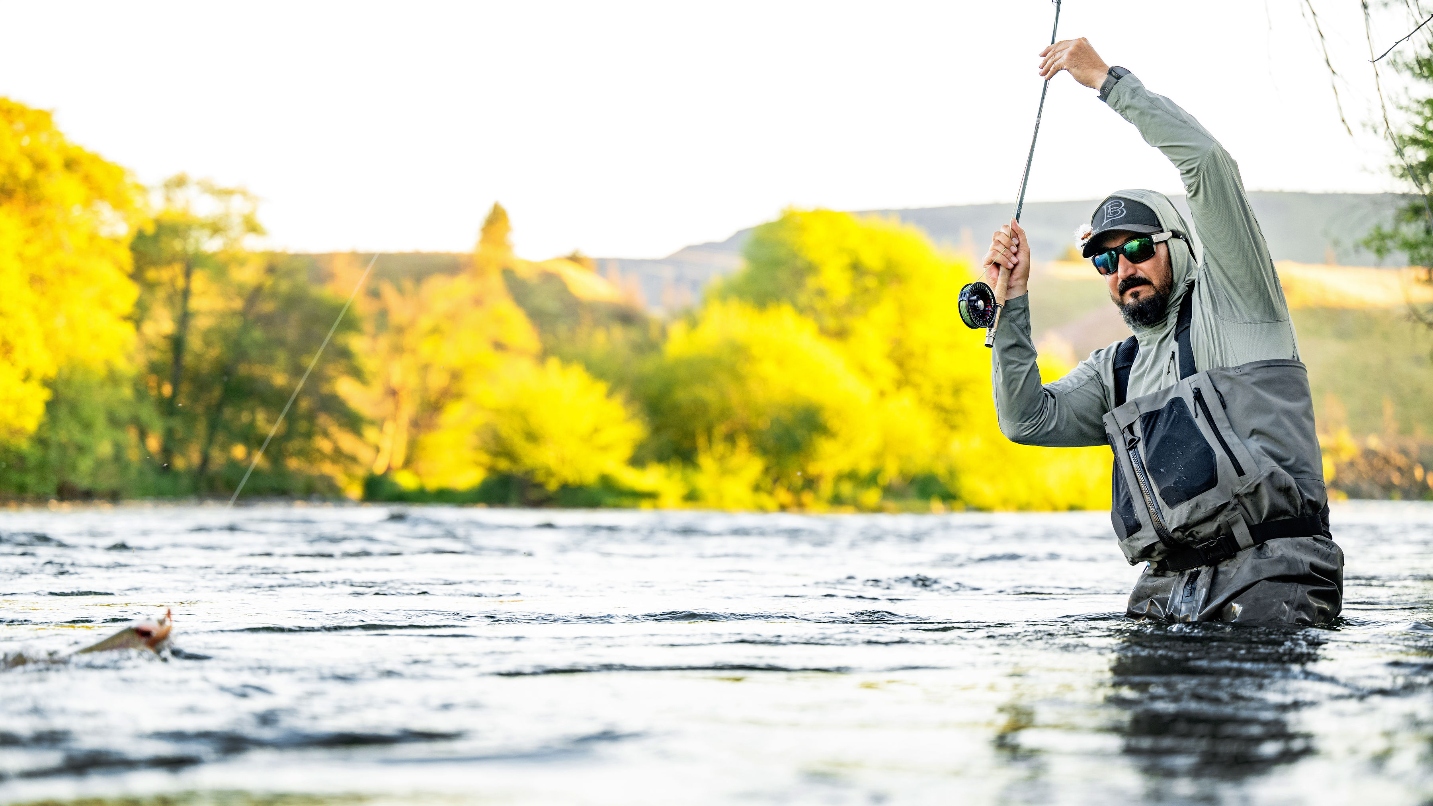
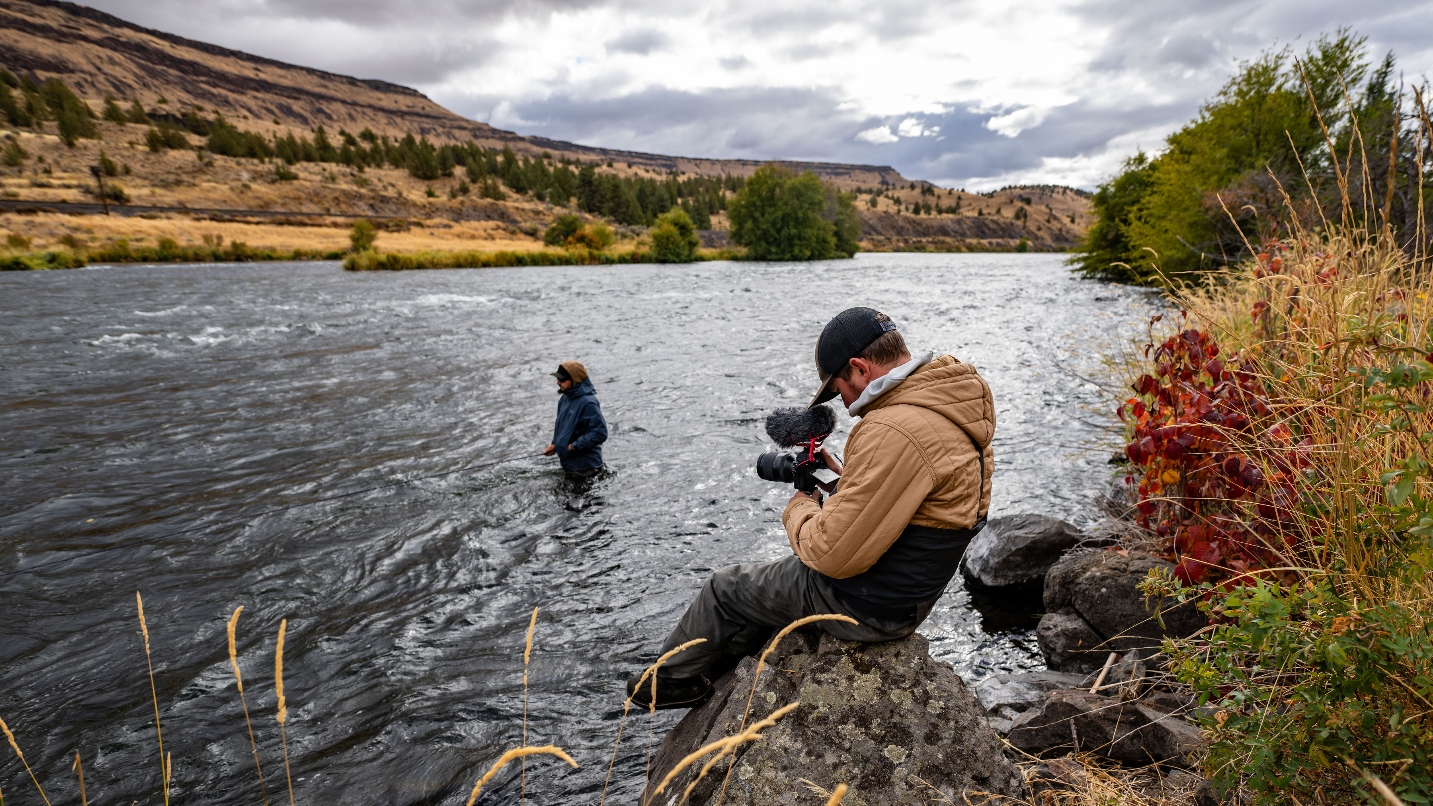
3. What do you want people to know about recreating on the Deschutes River?
You can spend a lifetime exploring the Deschutes and never see all the different facets of it. It’s a little over 250 miles long, originates in the Cascades. It’s really an alpine forest river up high, then it meanders through Sunriver and Bend. In the high desert it flows north to the Columbia, changing the way it looks and behaves the entire way. You can spend time on the middle Deschutes and then see the upper part and not recognize it. You can hike, float, innertube and have a very different experience with the river along a very long run, all the way to the Columbia.
4. What makes the Deschutes, in particular, a top destination for fly fishing?
The film showcases the variety of the fishery and covers all the different seasons. A lot of places in the American west have seasons that are short and restricted. A lot of western rivers are impacted by snowmelt — in the flood stage they get dark with flood water, which is high and dangerous. In the Pacific Northwest and Cascade Range, all the snowmelt goes into an aquifer and turns into groundwater, so you don’t see flooding. We can fish the whole way through — it’s very unique to the volcanic substrate. We have all these lakes. Between the rivers and lakes, we probably have more species variety and more diversity in Oregon than any western state.
For More:
When you’re ready to start out, here are some great Oregon-based resources:
- Female fishing guides: Humble Heron Fly Fishing in Southern Oregon, True North Fly Fishing in the Eugene area, Frigate Adventure Travel on the Oregon Coast and others
- Female fishing community groups: Central Oregon Lady Anglers, Wild Women of the Water, Stonefly Maidens, PDX Women on the Fly and Southern Oregon Women on the Fly and others
- BIPOC fishing groups: Soul River Inc., People of Color Outdoors, Brown Folks Fishing and others
